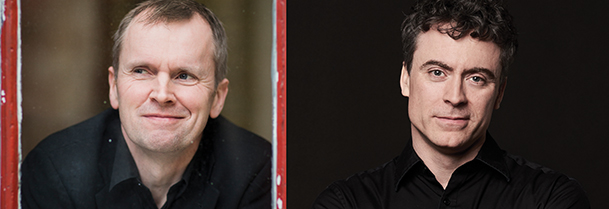Tag: piano four hands
-

PROGRAM NOTES: STEVEN OSBORNE AND PAUL LEWIS
Gabriel Fauré Dolly Suite Op. 56 In the 1890s Gabriel Fauré would often compose or revise small pieces for the infant daughter of his mistress Emma Bardac (1862-1934). These affectionate pieces celebrated a birthday, a pet, or a special person in the life of the young Regina-Hélène, known in the family as “Dolly,” and six…
-

PROGRAM NOTES: LUCAS & ARTHUR JUSSEN
Johann Sebastian Bach Three Chorale Preludes (arr. György Kurtág) The chorale, a hymn setting of pious verse in simple note values, was a central element in Lutheran liturgical practice, whether sung in unison by the congregation, in four-part harmony by the choir in a cantata, or artfully arranged into a web of contrapuntal lines on…

